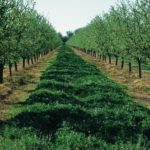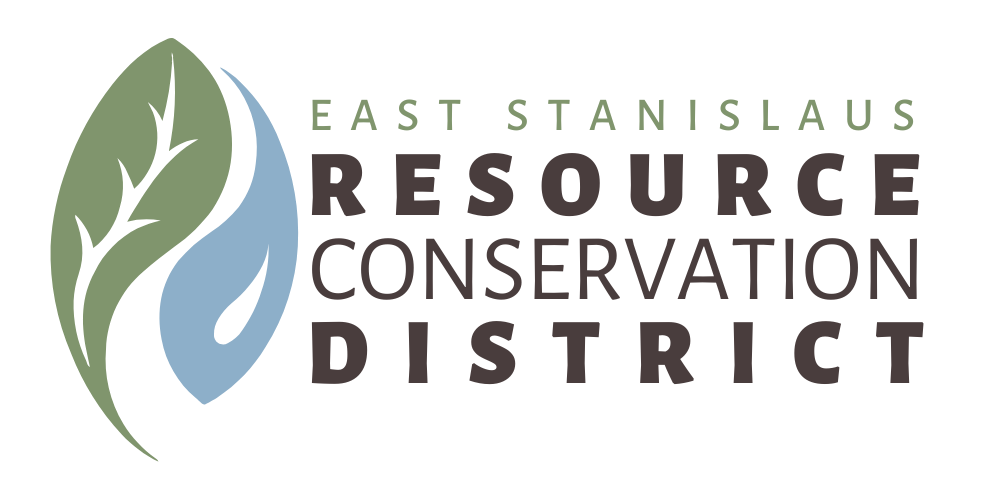What is Soil Health?
“Soil health” refers to the quality of soil and its ability to sustain life: plant life, animal life, and human life. Healthy soils can better withstand stresses like drought while offering the same or higher crop yields.
What healthy soil can mean for farmers:
- Less inputs: less labor, fertilizer, less pesticides potentially needed
- Better soil structure: better water retention, less puddling and runoff, higher load bearing capacity
- Soil that is nutrient-rich: more organic matter, more beneficial microbes that provide nutrients to plants

Available Programs:
In an effort to help farmers as they face less available water and diminished water quality, the ESRCD has sought to find applicable practices for water use as it relates to soil at a regional level. In January 2015, the ESRCD held a field day to demonstrate compost application techniques at the root zone of almond trees before planting. As part of the demonstration, soil was ripped and compost was blended down into the soil profile. Cross trenching showed the difference between the unprepared, compacted soil and the row amended with compost, in which the new trees would have nutrient-rich soil available at the root zone. We will continue to work with producers and researchers to develop a pilot program to gather data pertinent to our county’s soils and specific to almond growing. The project is expected to extend over the next 3-5 years, during which many more field days will be held to view and discuss soil management practices.
In addition to compost use, the RCD advocates the following soil-related practices

Cover crops: An unharvested crop grown for its benefits in crop production, soil health, water retention, erosion prevention, and reducing weeds and compaction.
No-till/ low-till: A method of growing crops without tilling or with modified tillage in order to increase water holding capacity and organic matter, and reduce energy use, soil erosion, and soil  compaction.
compaction.
Mulch tillage: Tilling the soil while maintaining a high amount of crop residue on the surface to increase organic matter, soil moisture, and decrease erosion and energy use.
Mulching: Applying plant residues or other materials such as compost to the surface. This helps compensate for residue loss due to over-tilling, while improving water efficiency.
Conservation Crop Rotation: Growing different crops in a planned sequence to increase yields, manage pests, improve water use efficiency and decrease pesticide use.
